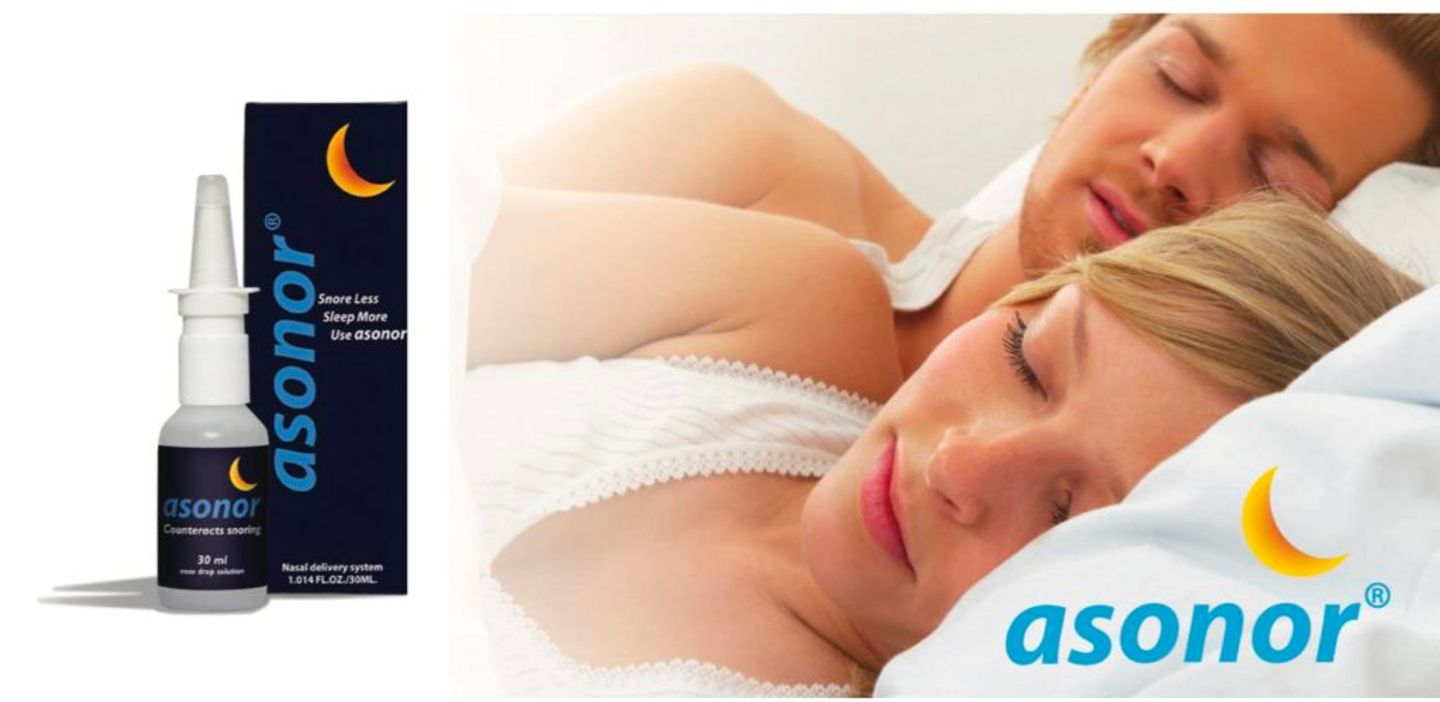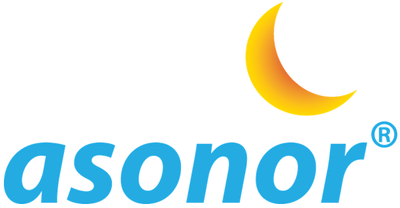

- Home
- Companies
- TannerMedico A/S - Asonor
- News
- ASMR for Sleep - Benefits and Snoring ...
ASMR for Sleep - Benefits and Snoring Solutions
Have you heard of the sensory phenomenon known as ASMR for sleep? ASMR stands for autonomous sensory meridian response, a condition, experience, or phenomenon that helps you fall asleep. As a form of parasthesia (a group or series of sensations felt in the skin), ASMR is perceived as a pleasant experience that is characterized by a tingling sensation in the neck and scalp areas that are triggered by certain audible or visual stimuli (see below).
Furthermore, the individual who experiences ASMR often feels calm, comfortable, grateful, happy, peaceful, and relaxed. In some case studies, individuals experience a reduced heart rate and feel sleepy during an ASMR response. Additionally, studies have shown that individuals feel extremely relaxed and experience a static sensation across the back of their neck, scalp, shoulders, and occasionally, in other areas of the body. It has been compared to what is often referred to as the “chills.”
It’s important to note that not every person experiences ASMR. However, most of the individuals studied have responded positively to ASMR for sleep therapy. Most of us initially experience this phenomenon somewhere between 5 and 10 years of age, but in rare cases, others feel it for the very first time once they’ve reached adulthood. Yet while this is considered a relatively new phenomenon, many individuals have been experiencing it for many years.
Asonor is the market leader in Denmark within its category. Asonor effect on snoring is clinically proven and was registered in 2005 by the health authorities in the EU. Today Asonor is registered by the health authorities in more than 70 countries. At Asonor, we aim to help you sleep comfortably, breathe easier and live healthier. We are the world leading brand in anti-snoring medicine, distributing worldwide through an expanding and highly successful network of distributors.

Researchers continue studying was that ASMR therapy will enable individuals to get a better night’s sleep. One group of clinical researchers have examined the way a type of sound commonly referred to as a binaural beat can be used in conjunction with ASMR to generate the brain signals that specifically target sleep. They’ve determined that the addition of an ASMR trigger to this type of sound creates a more relaxed state and has a greater efficacy when it comes to facilitating sleep.
In closing, some individuals who frequently snore during enhanced sleep are not only hindering their quality of sleep, they are disturbing their bed partners as well.
For the temporary relief of chronic snoring, try Asonor Anti-snoring Spray Solution. As one of the different easy ways to stop snoring, this product has been proven effective in 3 out of every 4 cases studies. Our product is tried and tested while it compromises of non-allergic ingredients to ensure that the throat tissues tighten and allow you to breathe properly at night. With considerable successful results, our product is sold in USA, Europe and Canada.
Aside from the primary benefits of ASMR for sleep therapy such as its calming effect, enabling you to fall asleep quicker, and the reduction of anxiety and stress, there are some additional benefits worth noting here. One of the key areas that current studies are focusing on is the ability to help individuals with depression. Roughly 80% of those individuals who experienced ASMR claimed that it made a positive impact on their moods and provided benefits that lasted several hours.
As with their moods and sleep, some individuals who listened to or viewed ASMR media reported that it enabled them to cope with chronic pain better than other therapies. But despite the fact that only 41% of the individuals studied attested to the reduction of their pain, those that reported this benefit also claimed that relief lasted up to 3 hours. There is continuing interest in the correlation between ASMR and a person’s mindfulness or their ability to concentrate and pay close attention.
Thanks to certain benefits such as the increased ability to cope with chronic pain, sleep improvement, and stress reduction, mindfulness meditation has grown exponentially in popularity over the past decade. Consequently, individuals who experience ASMR therapy often tend towards mindfulness compared to those who don’t experience the phenomenon. This may suggest that even the quieter, tranquil aspects of ASMR for sleep therapy can have an overall positive affect on one’s health and well-being.
A study of 300 participants conducted in 2017 suggested that some personality traits existed in those individuals that experienced an ASMR response. They found out that some individuals:
- had anxiety
- had daydreams or were prone to fantasizing
- were less conventional and more artistic where their outlook on life was concerned
- were more curious than others
- were prone to depression
- were self-conscious
While we’ve long known that our sleep quality greatly influences our moods both negatively and positively, our personalities affect our quality of sleep in many ways. For instance, morning types plan their bedtimes and wake-up times while being less likely to suffer with insomnia.
Conversely, evening types tend to be more restless and wired when turning in for the night.
Keep in mind that not every individual responds to ASMR for sleep therapy. However, those who do respond do not elicit the same response. In other words, what triggers a response in you may not trigger one in someone else. Additionally, some individuals may be extremely sensitive to one specific trigger while another person may need a combination of triggers.
ASMR pleasure sensations typically occur when an individual is exposed to certain sights, smells, sounds, or textures, examples of which often include:
- close personal attention such as getting a haircut, having your make-up applied, and medical exams
- crunching of leaves and other crisp sounds
- flipping pages of a book or magazine
- hair brushing
- light finger tapping
- rain
- slow movements
- towel folding
- whispering
However, it has long been recognized that the 4 most common ASMR response triggers include crisp sounds, personal attention, slow movements, and whispering. In fact, one of the more recent studies revealed that 75% of the participants in the study responded to whispering, while 53% had an ASMR response triggered by slow movements. Crisp sounds and personal attention caused ASMR responses in 64% and 69% of the study participants respectively.
Although additional research is being conducted, researchers found that some audio tracks and videos intended to provoke a response shared some common themes that influenced the phenomenon. Role-play scenarios that focused on personal attention such as getting massages or medical exams were also common response triggers. In addition to this, it would appear that most individuals enjoy ASMR content that contains two triggers such as a video that simulates crisp sounds and whispering.
When Jennifer Allen chose the terms “autonomous sensory meridian response”, she did so carefully in order to capture the physiological characteristics of what the individual was experiencing during their ASMR for sleep response. Here is what she took into consideration when she defined the concept:
- Autonomous – a feeling that results from an involuntary bodily response
- Sensory – the experience provokes the senses of sight, sound, and touch
- Meridian – this terminology refers the flow of energy throughout the body
- Response – certain triggers that cause a spontaneous reaction or response
Remember, the most common reason that individuals use ASMR is for relaxation and studies have shown that over 25% of them use the technique daily. Some individuals have reported that ASMR videos improved their moods and reduced their stress levels. Current research has also shown that ASMR enables individuals to sleep better.
ASMR causes tingling sensations at the back of the neck and top of the head and is a response to certain sounds or images. One way or the other, we’ve seen ASMR for sleep become extremely popular, especially on social media. Here are 6 interesting facts regarding this phenomenon to be aware of:
- FACT #1: ASMR got its start on Facebook when Jennifer Allen, computer scientist coined the term in a 2010 post on her timeline. Interestingly enough, she intended that the word “meridian” be used in place of “orgasm.”
- FACT #2: ASMR generates a special feeling which many have described as brain tinglings, pleasure, and relaxation.
- FACT #3: There are numerous videos on YouTube that provoke ASMR responses. The audio sounds or visual images in these videos are referred to as ASMR “triggers.”
- FACT #4: In an ASMR study comprised of 475 individuals, 98% said they watch these videos to relax while 82% said the videos helped them fall asleep quicker.
- FACT #5: ASMR is a relatively new concept and that it all started in 2007 between individuals using the SteadyHealth.com website (according to Shenandoah University professor Dr. Craig Richard.
- FACT #6: As of 2022, ASMR is literally everywhere. It’s been estimated that there are over 10 million ASMR videos on Instagram and over 13 million on YouTube.
We don’t know about those of you who are reading this content, but it sounds like this phenomenon is going to be hanging around for a while.

